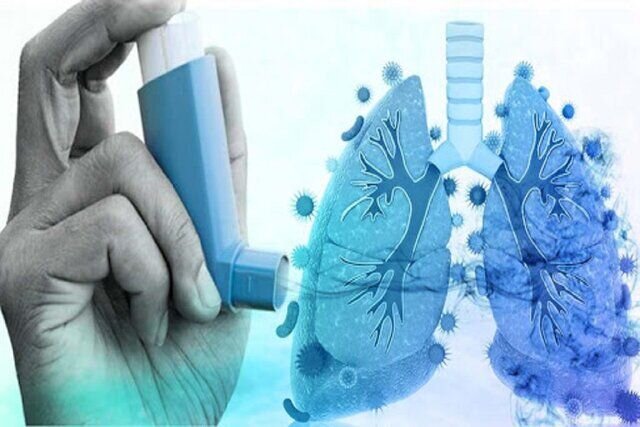TEHRAN – Treatment for asthma, a chronic inflammatory lung disease, includes learning how to avoid risk factors and seeking medical help to manage the disease.
Asthma affects more than 260 million people worldwide and causes more than 450,000 deaths each year, but it is preventable.
In this context, World Asthma Day (WAD) is observed on the first Tuesday of May to raise awareness of asthma across the world.
The Global Initiative for Asthma (GINA), a consortium of the World Health Organization founded in 1993, selects a theme to celebrate this day each year.
This year this day falls on May 7th and is celebrated under the theme 'Asthma Education Empowers'.
The report highlights the need to ensure asthma patients have adequate education to manage their disease and recognize when to seek medical help.
Asthma affects both children and adults, but in children it is primarily known to be caused by allergies.
Unlike infectious diseases, asthma usually develops spontaneously. In other words, asthma is not caused by a disease.
Infections do not play a role in the development of asthma, but they can cause or worsen the disease and trigger an asthma attack.
In Iran, about 9-13 percent of people of different age groups suffer from asthma, the majority of whom are children. This means that the prevalence of asthma changes with age.
Additionally, the global prevalence of asthma is reported to be approximately 3-15%, reaching up to 20% in some countries.
Asthma patients must accept the fact that they are sick and take effective treatment measures.
Medical facilities and academic centers also have a responsibility to educate patients that treatment requires more than medication. This includes avoiding triggers that cause asthma attacks.
Asthma attacks begin with increased symptoms such as coughing, wheezing, and shortness of breath, and as they progress, they can cause a drop in blood oxygen levels. In this situation, the patient needs to be hospitalized. Most asthma-related deaths are caused by acute asthma attacks that cause shortness of breath and low oxygen levels.
The asthma education initiative is carried out by the Iranian Asthma and Allergy Association in collaboration with the Institute of Immunology, Asthma and Allergy.
The Asthma Scientific Conference is held annually to coincide with World Asthma Day and discusses the latest developments in asthma management.
In addition to the academic conference, there will also be a 'Family Education Conference' to provide patients and their families with practical tips on asthma and its effective management.
Factors influencing the development of asthma
Genetics and environmental factors play a major role in the development of allergies such as atopic eczema, childhood asthma, and allergic rhinitis.
Environmental factors that cause allergies are classified into two categories: “allergens” and “irritants.”
Allergens can be divided into two types: “external allergens” and “internal allergens.” External sources include pollen from trees, grasses, and weeds. Dust mites, cockroaches, fungi, and pets such as cats and dogs are considered internal allergens.
Irritating factors include not only smoking but also inhalation of strong odors such as detergents that can cause allergic reactions.
Air pollution is an important factor that worsens asthma.
Harmful air pollutants enter the respiratory system. These pollutants, depending on their size (approximately 4-5 micron particles), can enter the “lower respiratory tract.”
Very small particles can also penetrate deep into the lungs and into the bloodstream.
Most of these pollutants are free radicals that cause inflammation in the lungs and other parts of the body and are considered among the most harmful.
Therefore, increasing pollution in metropolitan areas is contributing to the increased incidence of asthma and allergies in metropolitan areas.
Diagnosis and treatment of asthma
Various respiratory tests such as bronchodilator stress tests, exercise tests, methacholine, and exhaled nitric oxide tests are conducted in the country to determine the type of disease an individual is suffering from.
After diagnosing the type of disease, we will propose new treatments such as the administration of biological agents and immunotherapy (allergy vaccine injections).
People with allergic asthma receive “immunotherapy” and receive vaccine treatment.
One new treatment for asthma is the use of biologics, such as the anti-IgE drug omalizumab (Xolair). Xolair is created similar to natural antibodies and is specifically designed to capture most of the IgE and block allergic reactions.
Two years have passed since this drug was manufactured in Japan and used on patients.
Areas with high prevalence of asthma
The prevalence of asthma appears to be increasing in this country. As already mentioned, pollution in big cities is one of the main reasons why asthma cases are increasing in the country.
The cities of Arrak and Ahvaz and Sistan-Baluchistan have the highest prevalence of asthma.
By taking steps to control irritants and allergens, the prevalence of asthma can be reduced and managed.
universally important issues
The major universal problems that require education are under- or inaccurate diagnosis, underuse of anti-inflammatory inhaled corticosteroid inhalers, and overuse of short-acting beta2-agonist (SABA) inhalers. These include overuse and over-reliance, and lack of patient awareness requiring professional evaluation. And further management.
In low- and middle-income countries, the lack of availability of inhalers, especially corticosteroid-containing inhalers, is a major contributor to the fact that more than 90 percent of asthma deaths occur in these countries.
Policy makers and the pharmaceutical industry should raise awareness of the continued preventable morbidity associated with this common disease despite the existence of highly effective controller treatments, and Efforts to ensure that friendly inhalers are available in all countries are called for. Countries that “leave no one behind”.


